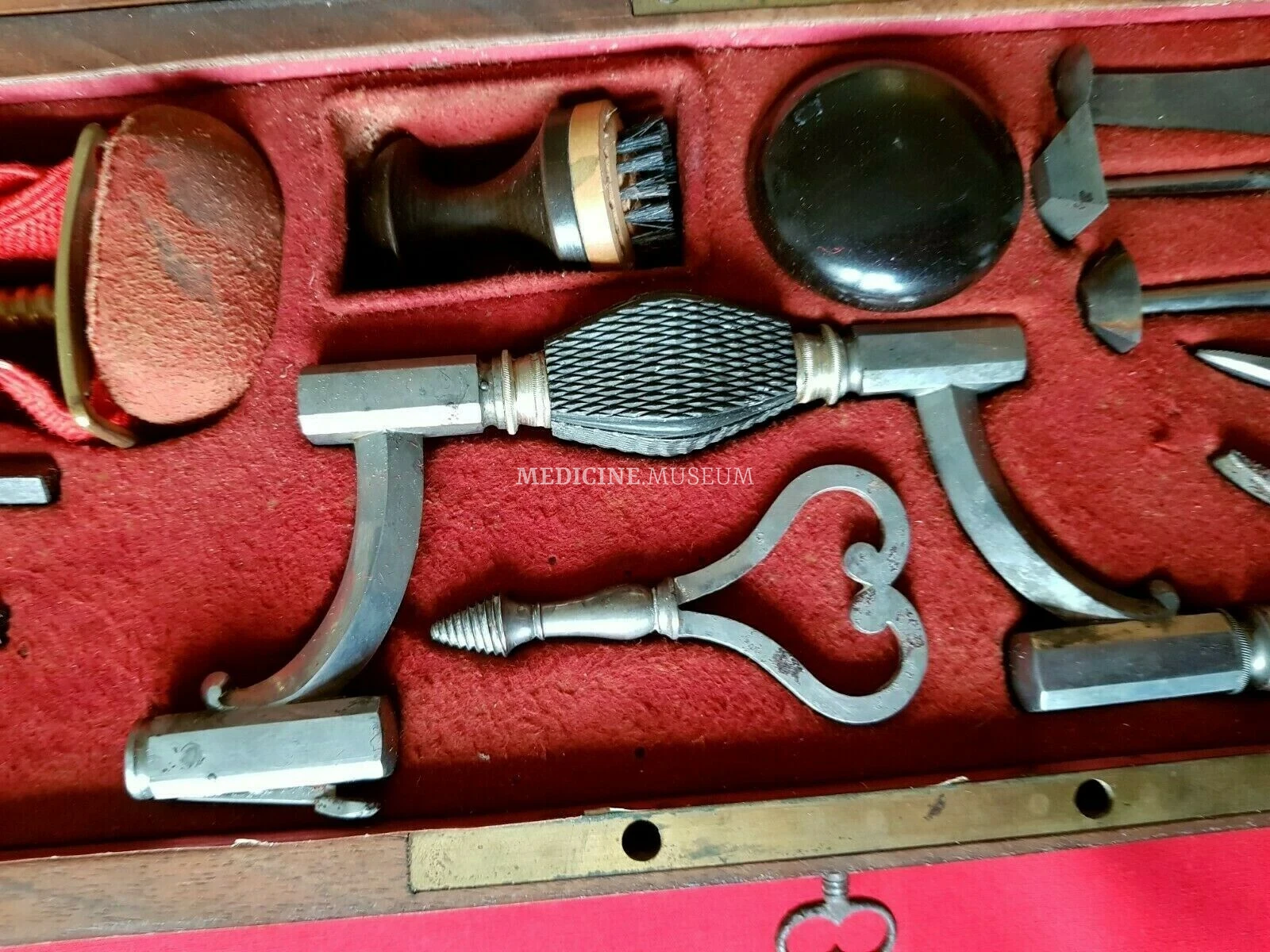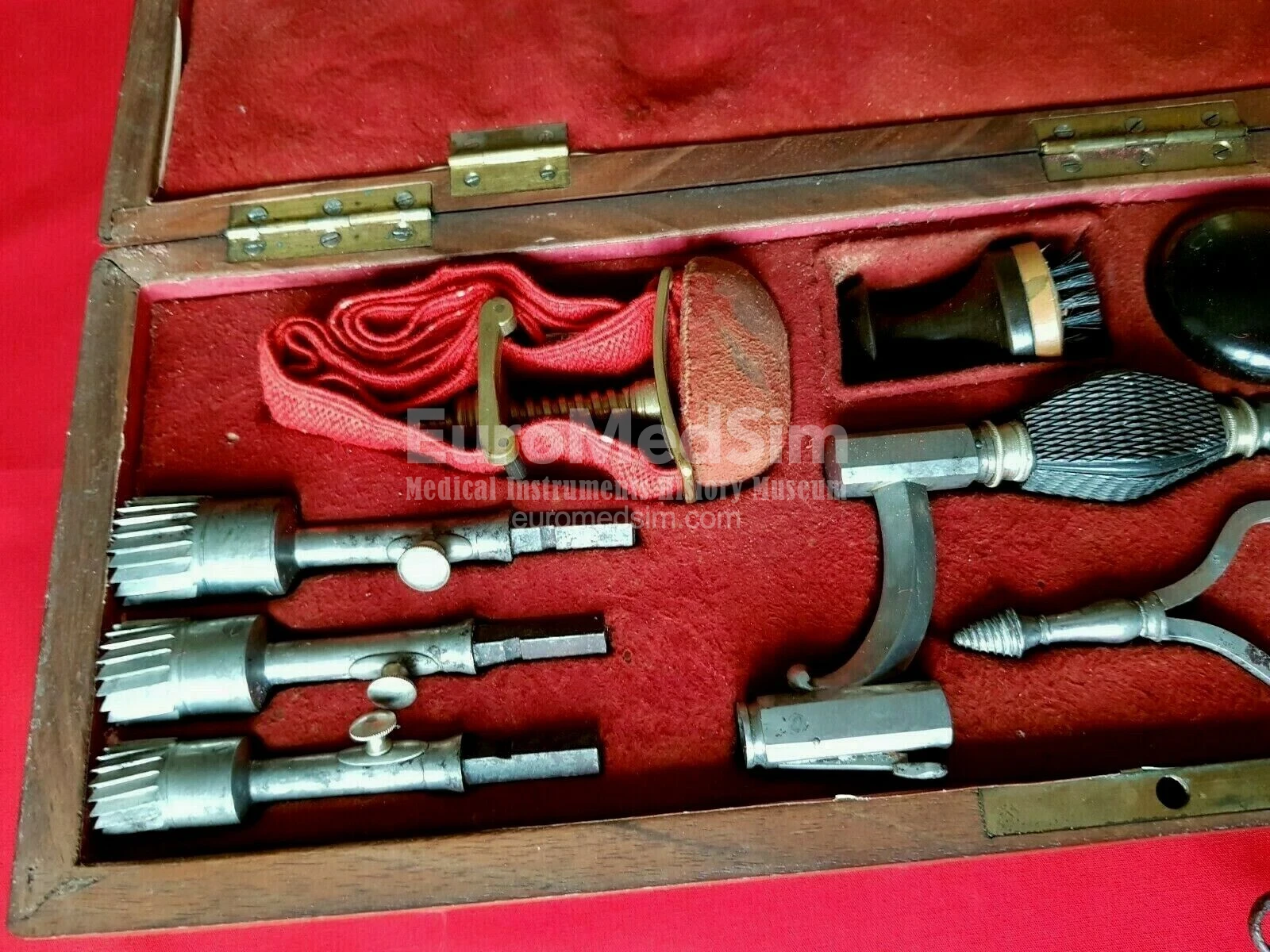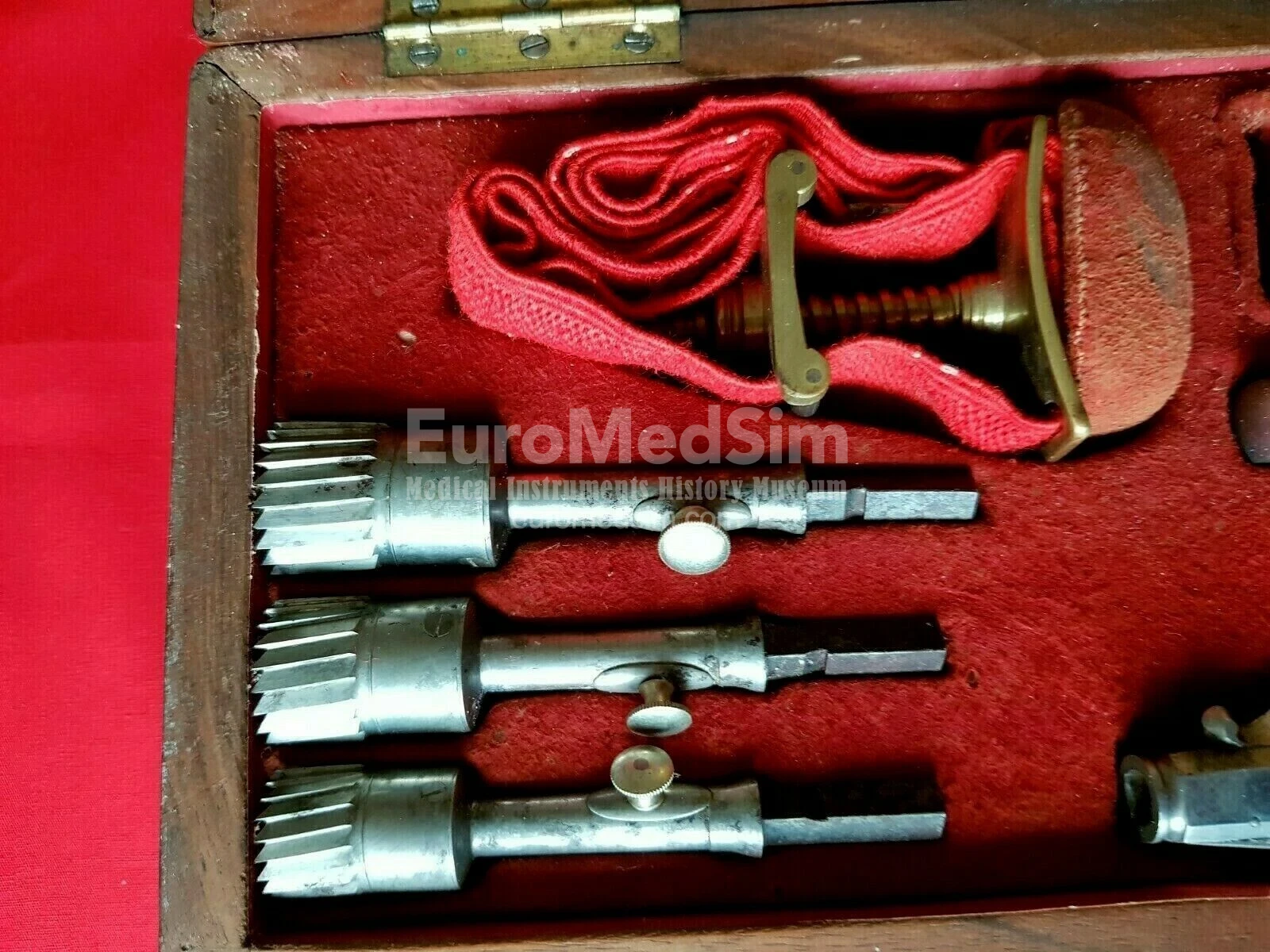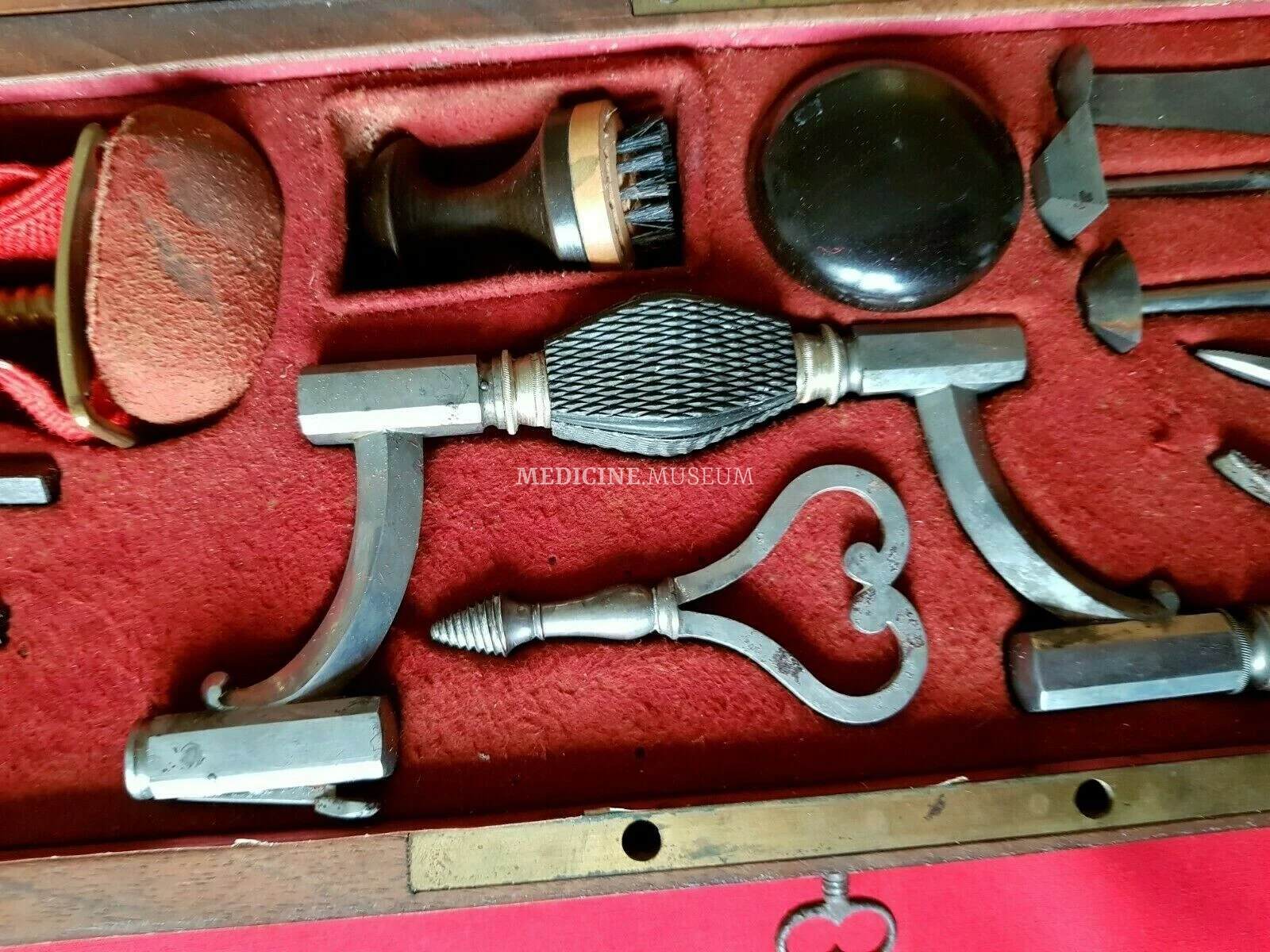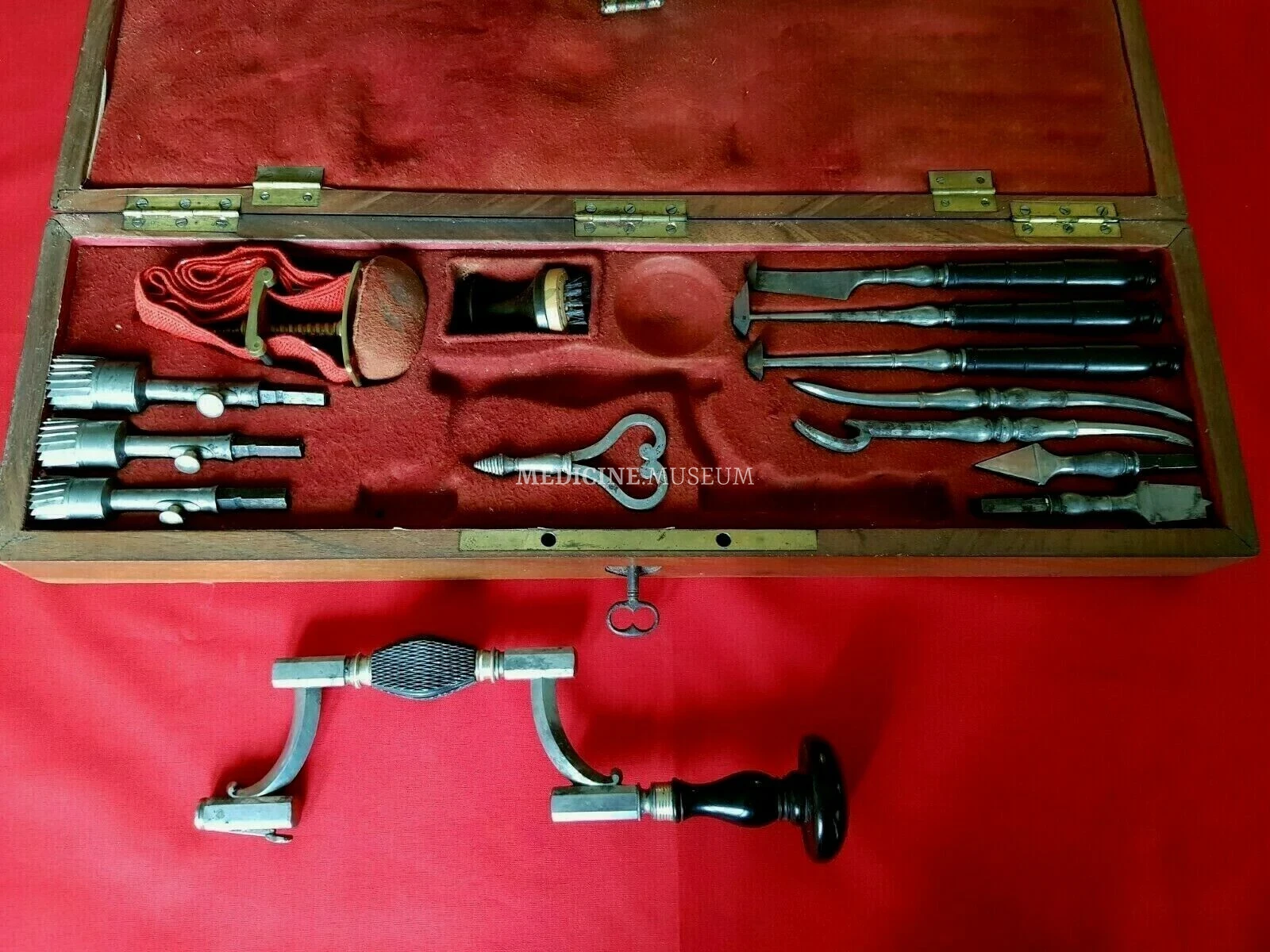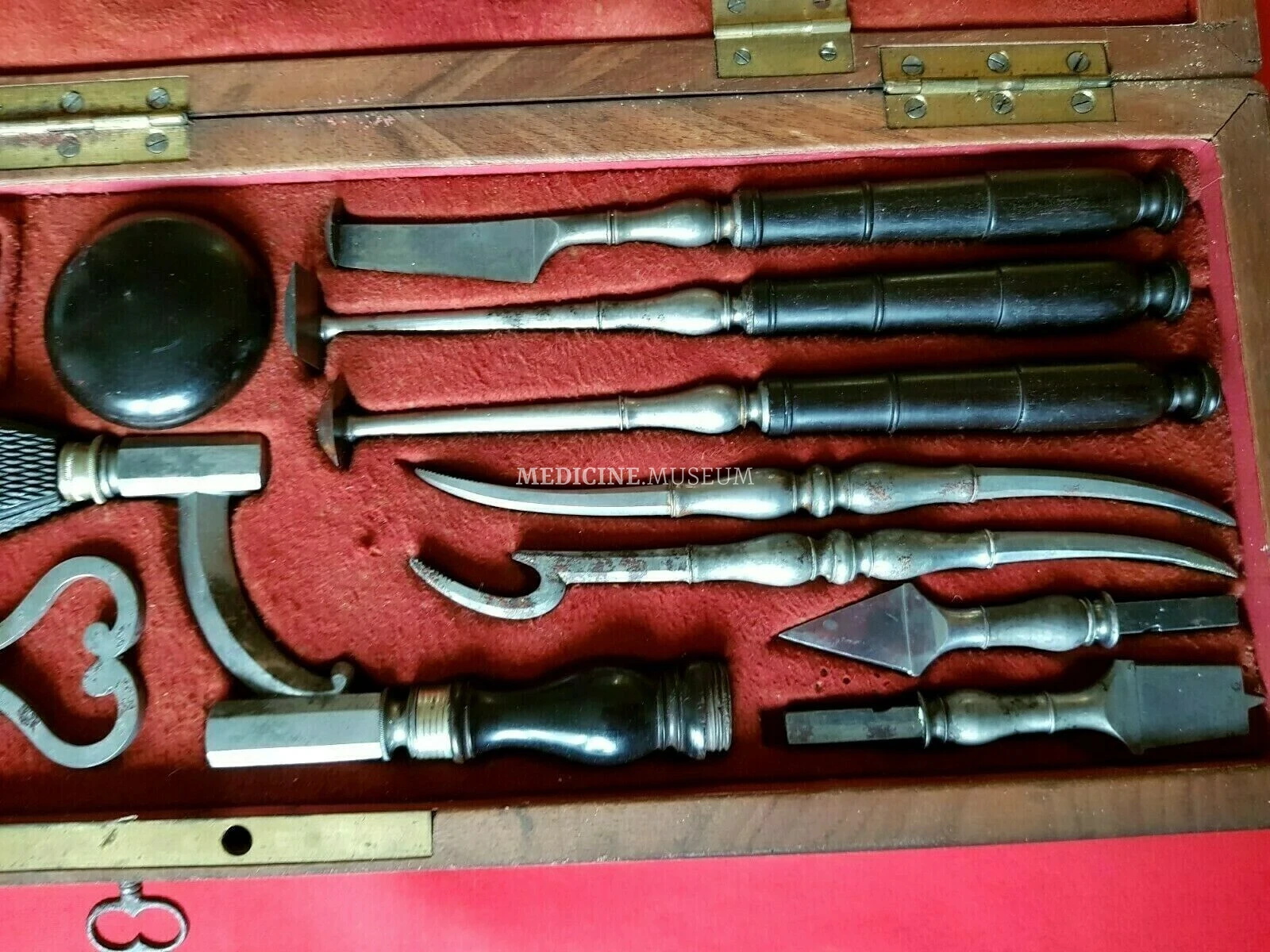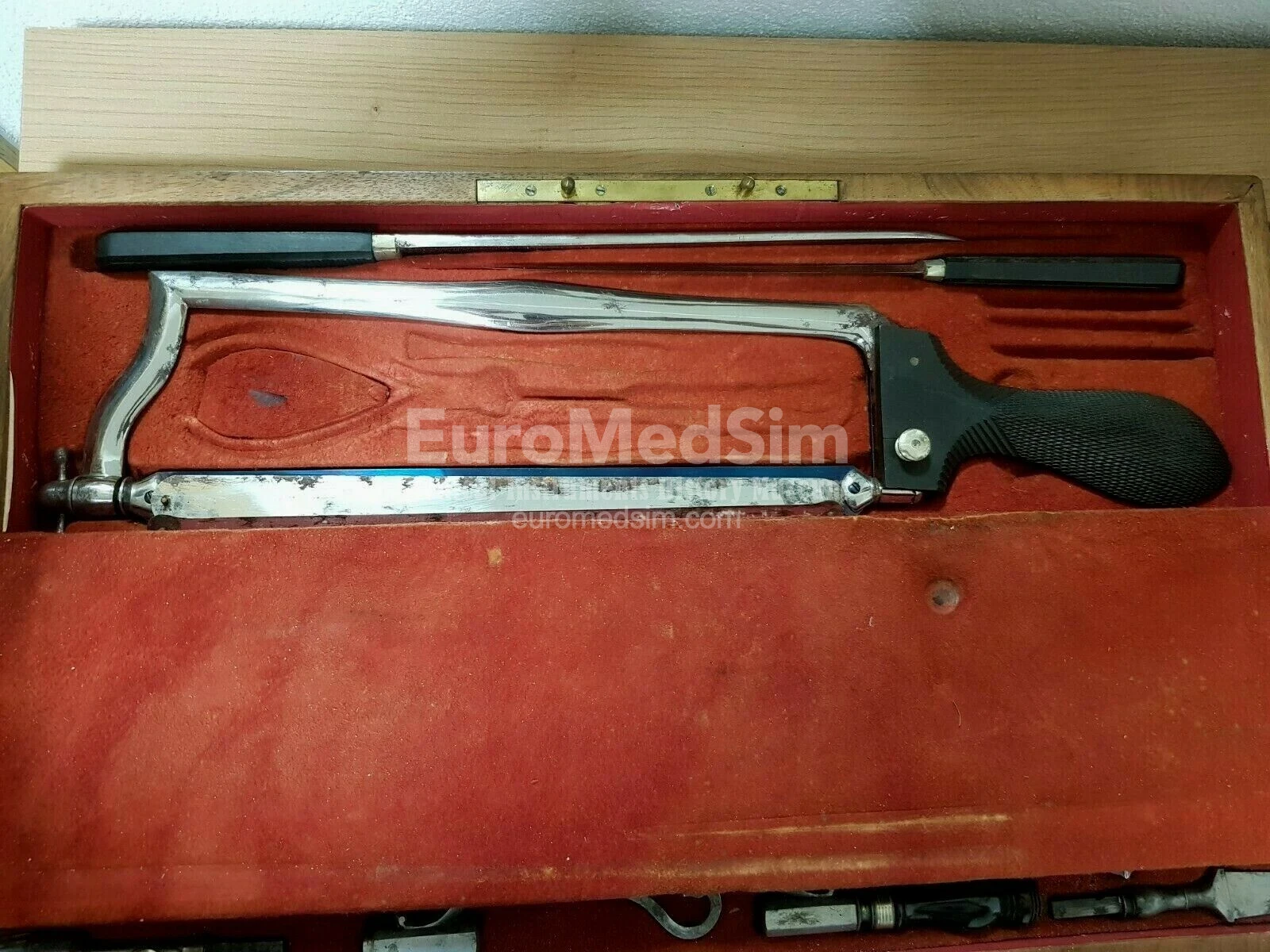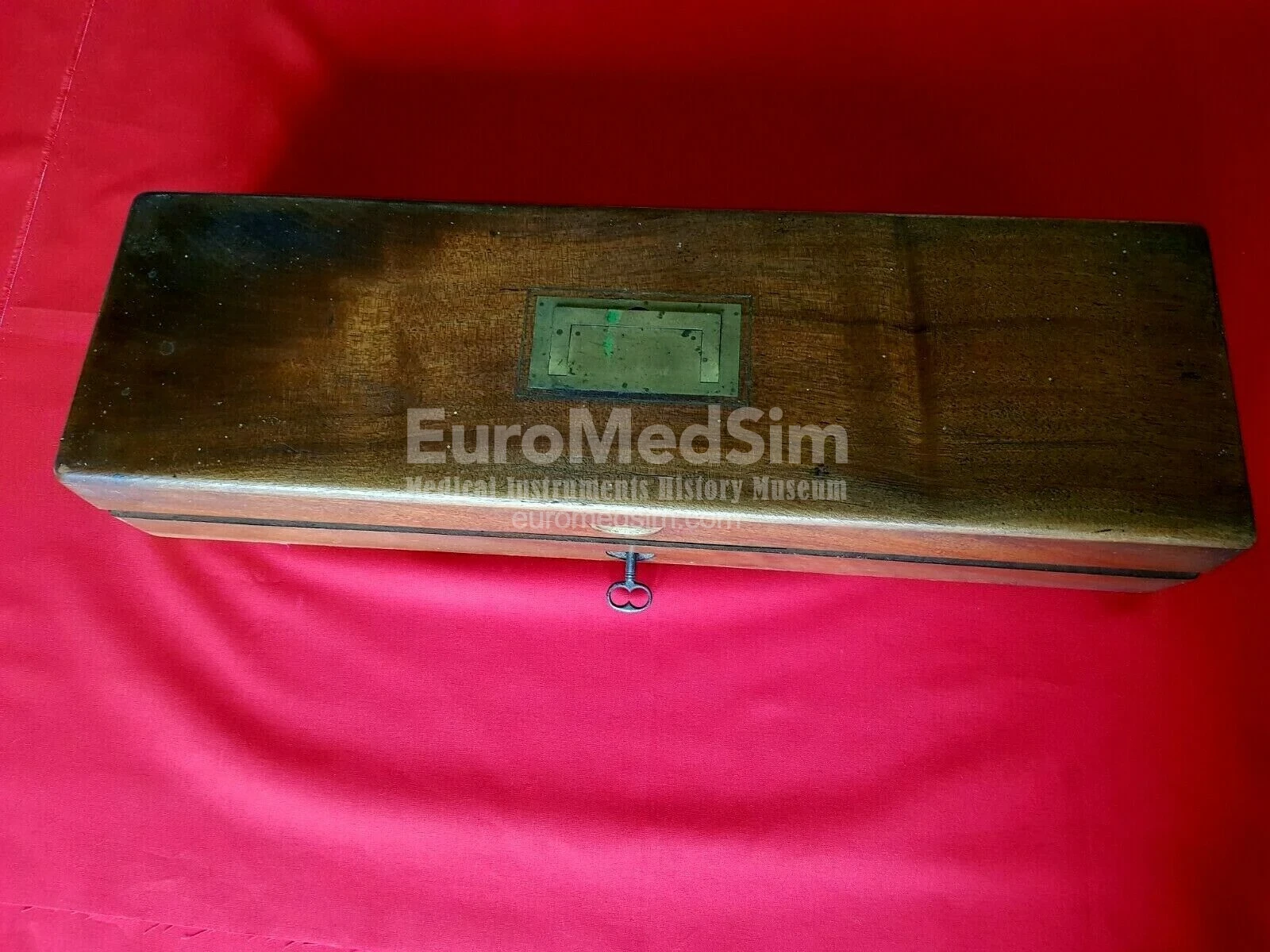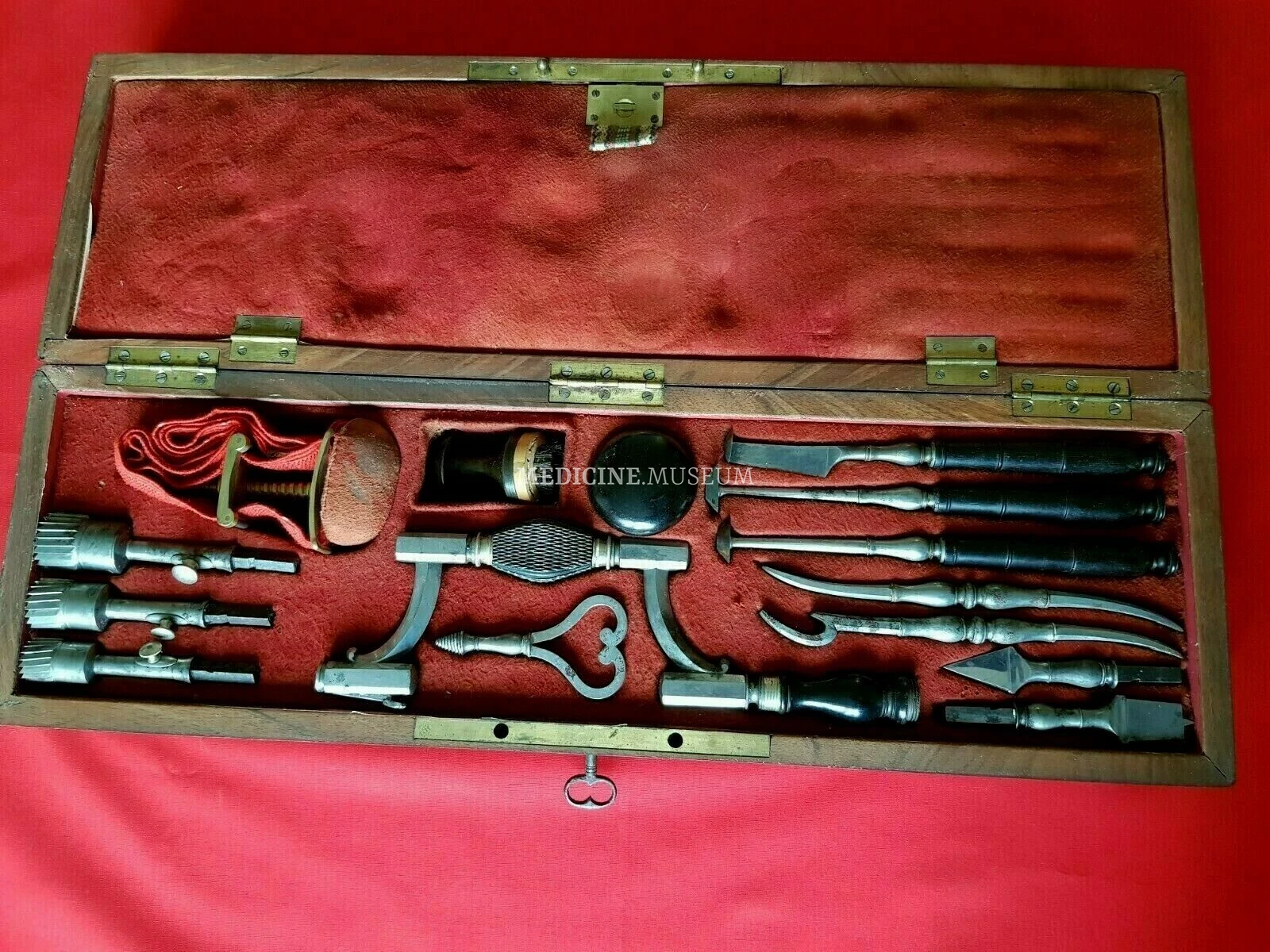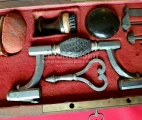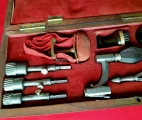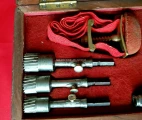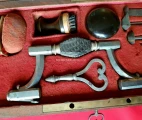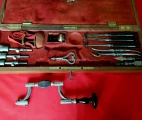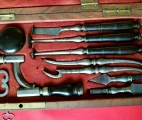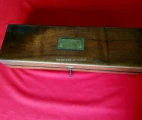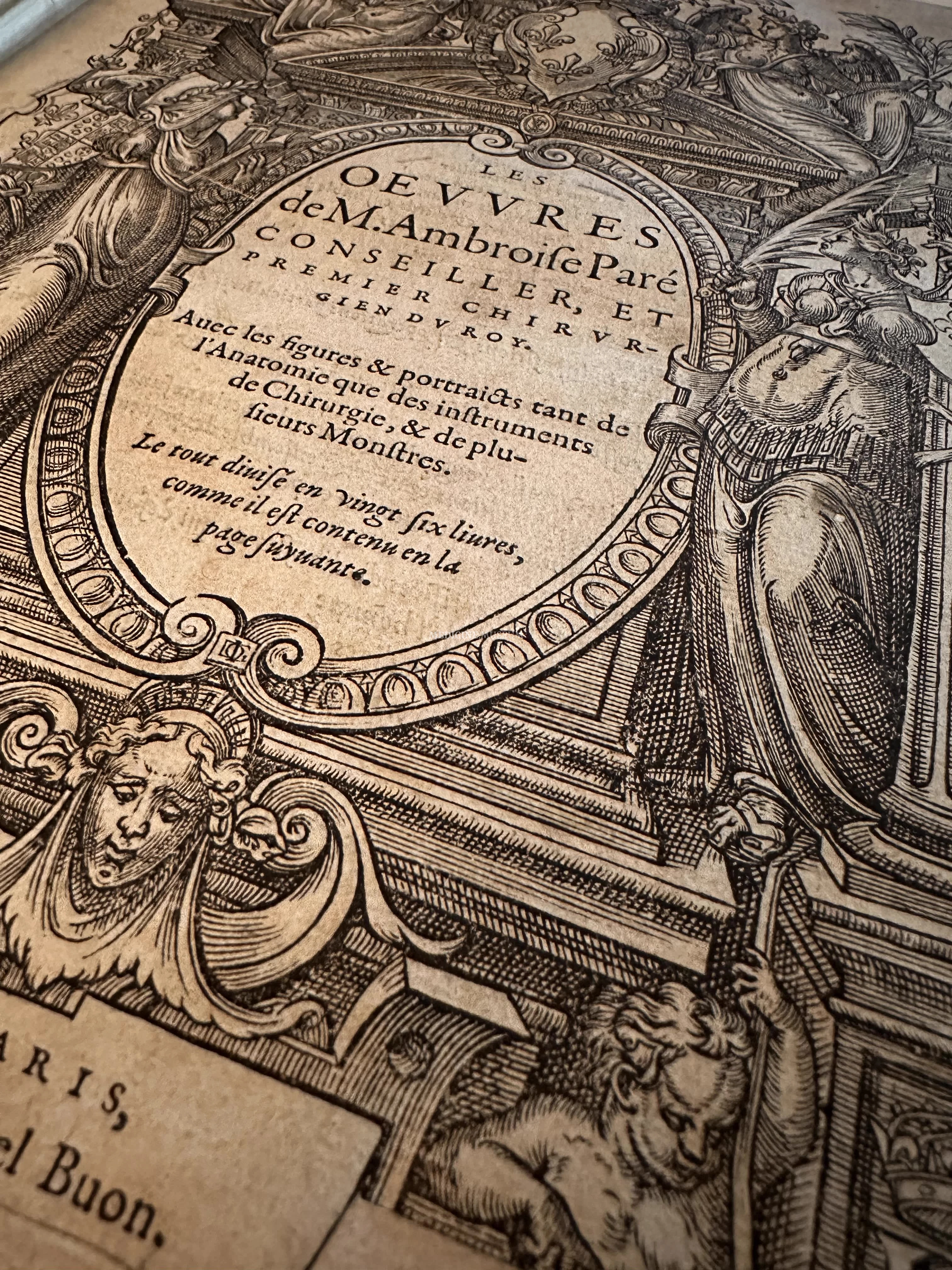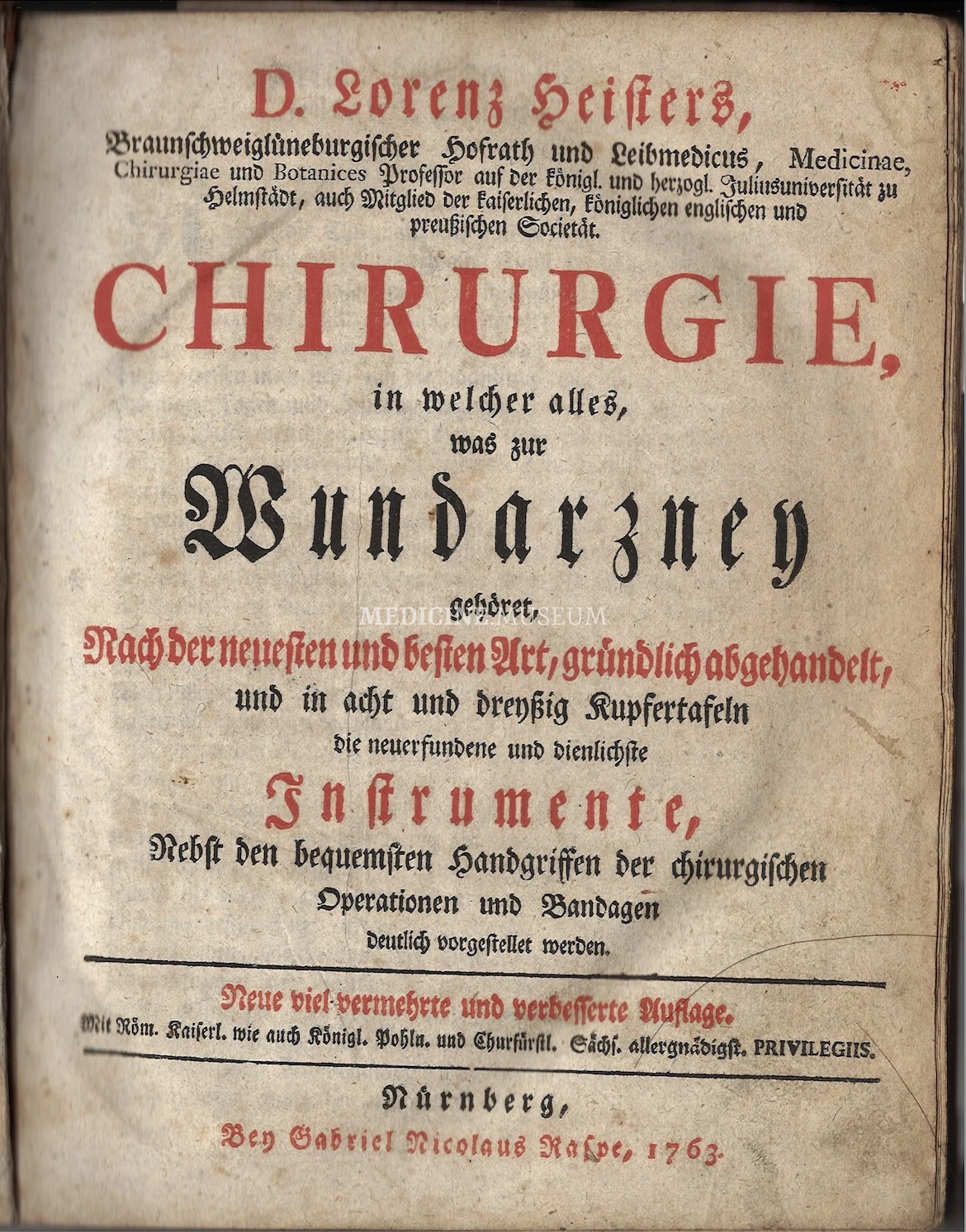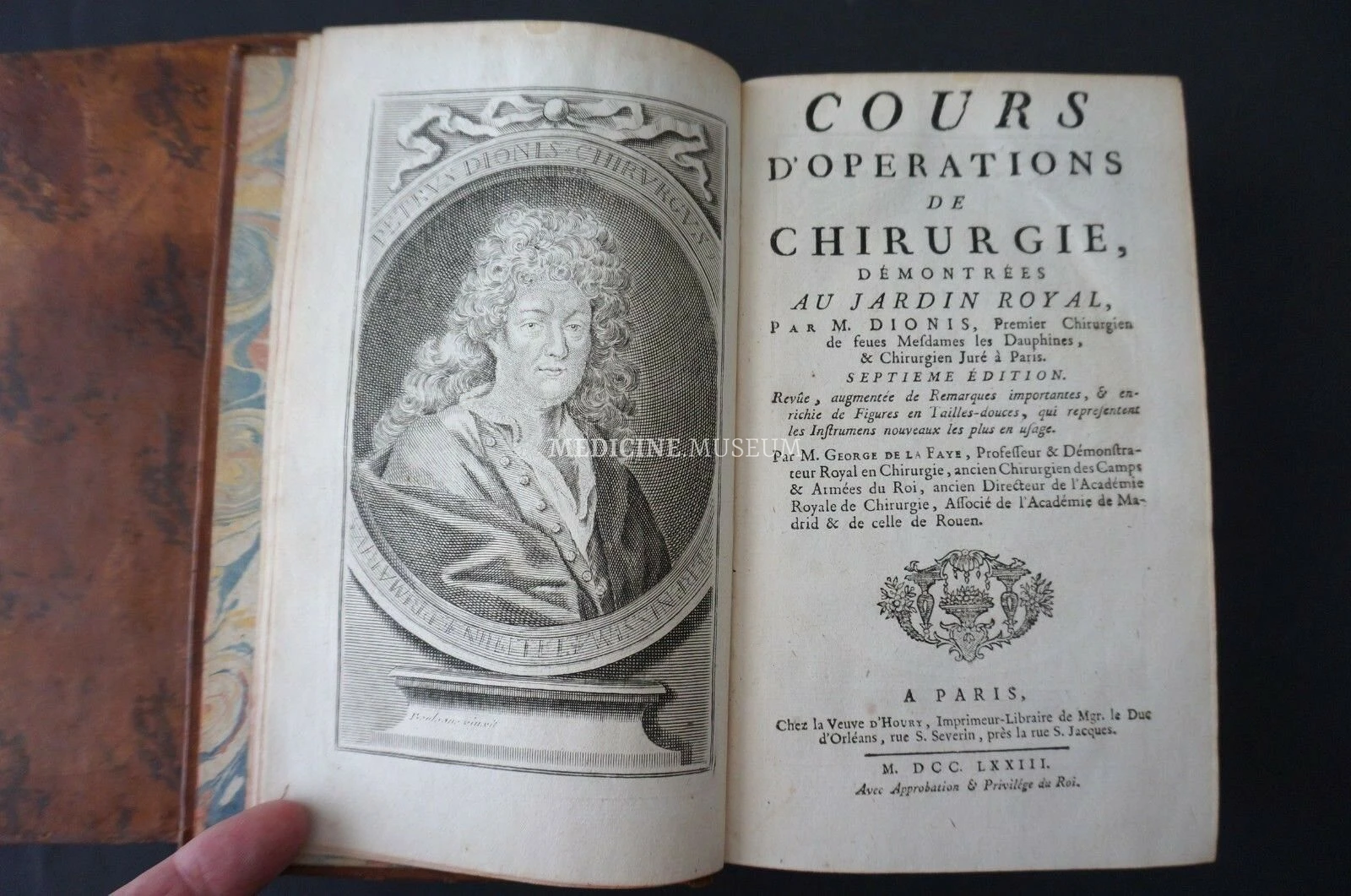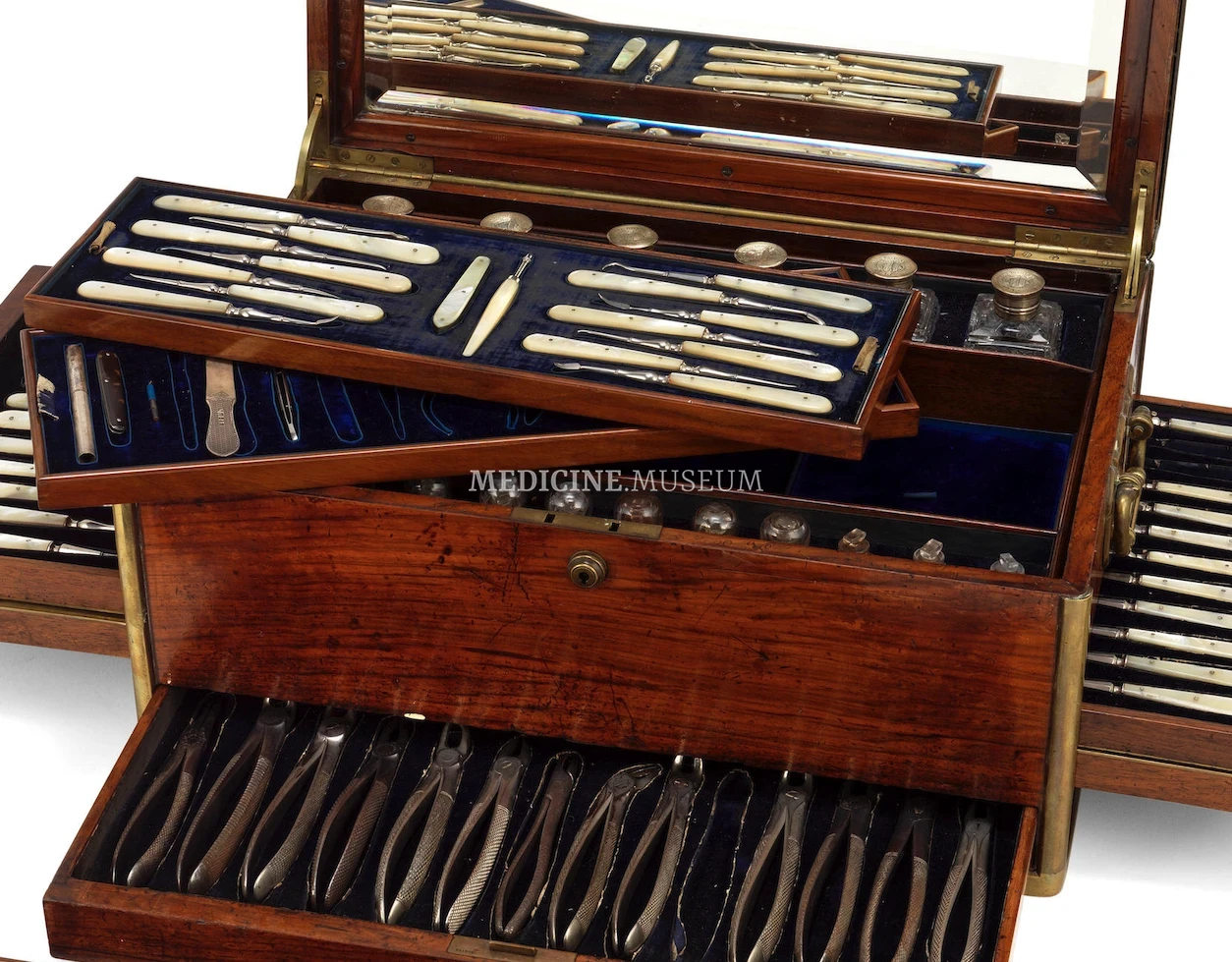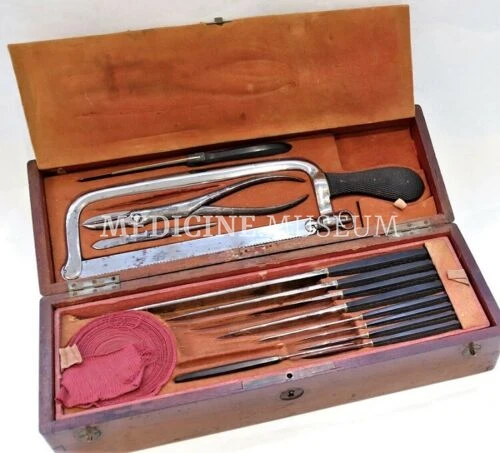Trepanation and Amputation Surgical Cased Set
The rare French amputation kit, early 19 century, contains the typical instruments of a trauma and military surgeon, such as brace and bit cranial trephine, elevators and rugines, amputation saw, brush to clean the operative field. Most of the instruments have ebony handles. The case has two compartments lined with red velvet, original key is preserved.
Content of the cased set
A mahogany case with a brass handle, which when closed is flush with the top surface. Case contains the following instruments for amputation and trepanation.
Lower compartment
- Petit's type tourniquet. A screw-type haemostatic bandage, the tension of which was adjusted by a rotating brass screw. A tightly packed pressure pad (“pelotta”) is attached to a wide fabric strap, which, when the strap is tightened, presses tightly against the artery, stopping blood flow.
- Brace and bit cranial trephine with black wooden handles. This instrument was designed for drilling holes in the skull during cranial surgery. The upper round black wooden handle allowed the surgeon to stabilize the brace in a vertical position and apply downward pressure. The middle handle, which was crosshatched (checkered) for better grip, was used to rotate the drill. The textured surface was created by etching small crisscross lines into the wood to improve traction in the surgeon’s wet or bloodied hands.
- 3 trephines with round serrated blades
- 2 flat drill bats
- Brush to clean the surgical field and remove any debris or loose fragments of the bone
- Tire-fonds (bone-button extractors. From French tirer — 'to pull' and fond — 'bottom, base, depth', so literally: 'puller from the depth', an extractor or screw used to pull out) with threaded conical points. These instruments have a pointed screw tip and a small handle, used to twist into the circular bone section (or “button”) created by the trephine and to lift the bone disk from the skull. Similar screw instruments may also have been used to extract hard foreign bodies, such as bullets, from other parts of the body
- 2 double-ended skull-elevators. The function of a skull-elevator was to lift fractures of the skull bones to prevent further depression of the bone fragments into the brain.
- Lenticular with ebony handle. An instrument with steel working part consisting of the convex button-end used for retracting or protecting the dura mater after trepanation. This rounded tip is mounted on the knife-like blade
- 2 rugines with ebony handles. The rugine (Latin rugina — 'scraper') or periostal elevator is a slender, flat, spatula-like instrument. A type of surgical scraper to remove connective tissues such as the scalp or the periosteum (the membrane covering the skull bones) to provide clear view and enable free access to the bone.
Three tools (lenticular and rugines) have finely carved ebony-wood handles, like a chess pawn. This classic shape was typical of 18th-century tools, whereas 19th-century handles were simply pear-shaped, without any elaborate carving.
Upper compartment
- Amputation saw with ebony handle
- 2 Liston amputation knives
(some other instruments are missing)
Reference objects
As reference can be offered Trephination set by Bogner of Strasbourg, 18th century (Science Museum, London)
